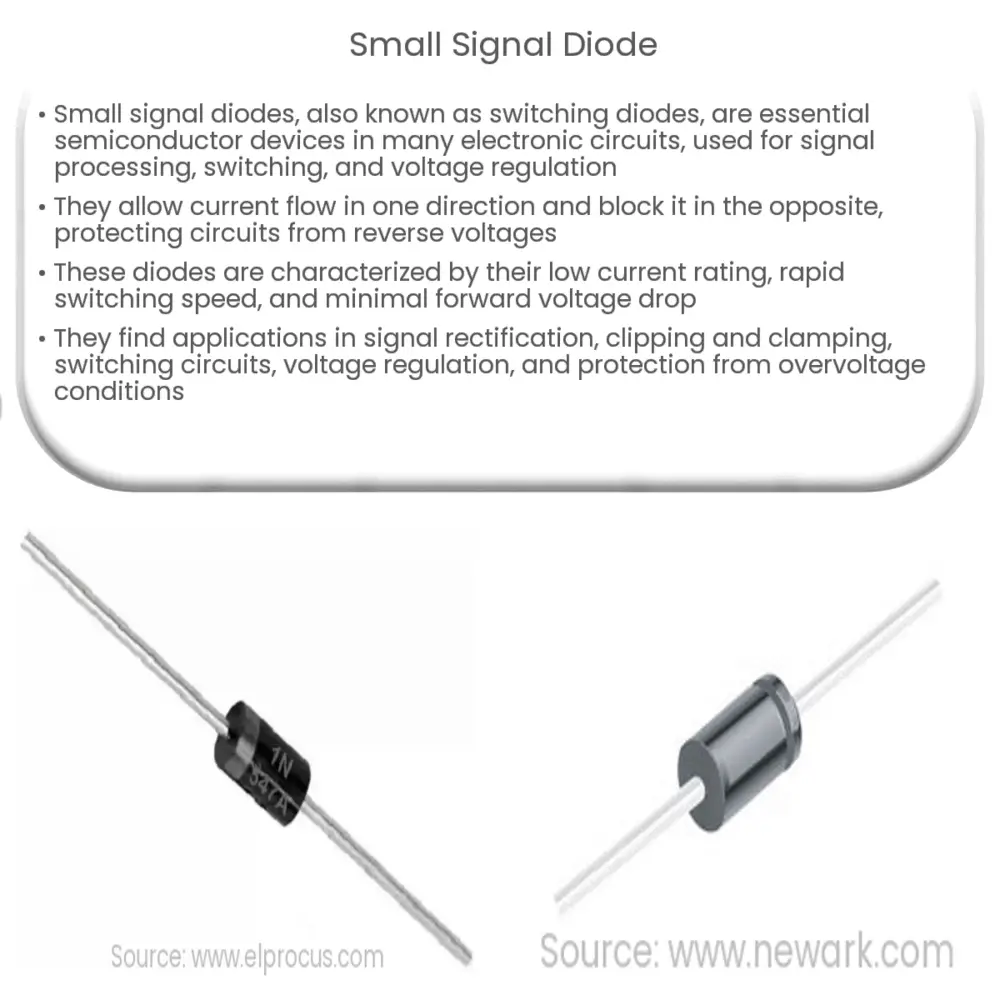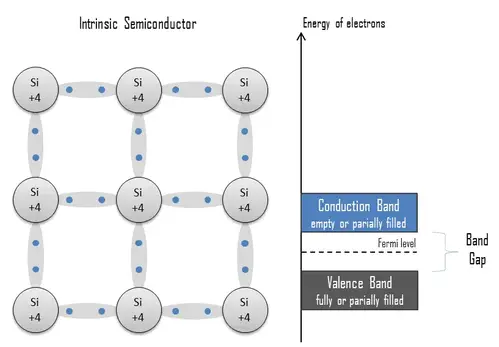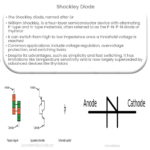Small signal diodes are crucial semiconductor devices used in electronic circuits for signal processing, switching, and voltage regulation.

Introduction to Small Signal Diodes
Small signal diodes, also known as switching diodes, are a type of semiconductor device that plays a crucial role in the operation of many electronic circuits. They are widely used in various applications such as signal processing, switching, and voltage regulation. This article aims to provide a comprehensive understanding of the importance of small signal diodes and their various applications in the electronics industry.
What is a Small Signal Diode?
A small signal diode is a semiconductor device that primarily allows the flow of electric current in one direction, known as the forward direction, and blocks the flow of current in the opposite direction, called the reverse direction. This unique property makes small signal diodes an essential component in various electronic circuits, where they are employed to control the flow of current and protect the circuit from damage due to reverse voltages.
How Does a Small Signal Diode Work?
A small signal diode consists of a P-type semiconductor material, which has an excess of positive charge carriers (holes), and an N-type semiconductor material, which has an excess of negative charge carriers (electrons). When these two materials are combined, they form a PN junction at their interface. In the forward-biased state, a small positive voltage is applied to the P-type material, causing the holes to move toward the junction. Similarly, a small negative voltage is applied to the N-type material, causing the electrons to move toward the junction. As the electrons and holes combine at the PN junction, current begins to flow through the diode.
Conversely, when the diode is reverse-biased, the applied voltage forces the holes and electrons away from the PN junction, creating a region of high resistance known as the depletion region. This high resistance effectively blocks the flow of current in the reverse direction, preventing damage to the circuit and its components.
Key Characteristics of Small Signal Diodes
Small signal diodes differ from their counterparts, such as power diodes, in several key characteristics. Some of the most important features of small signal diodes include:
- Low current rating: Small signal diodes are designed to handle low current levels, typically ranging from a few milliamperes (mA) to a couple of hundred milliamperes.
- Fast switching speed: These diodes are capable of switching on and off rapidly, allowing them to process high-frequency signals without significant distortion or delay.
- Low forward voltage drop: The voltage drop across a small signal diode in the forward-biased state is relatively low, which helps minimize power loss and heat generation in the circuit.
In the next section, we will discuss some of the most common applications of small signal diodes in electronic circuits and their importance in modern electronics.
Common Applications of Small Signal Diodes
Small signal diodes are employed in a wide variety of electronic applications, owing to their unique properties and characteristics. Some of the most common uses include:
- Signal rectification: Small signal diodes are often used in rectifier circuits to convert alternating current (AC) signals into direct current (DC) signals, enabling the efficient operation of various electronic devices.
- Clipping and clamping: In signal processing, diodes are employed to limit the amplitude of a waveform to a specific level, known as clipping, or to shift the entire waveform to a desired DC level, known as clamping.
- Switching and logic circuits: Due to their fast switching speed, small signal diodes are widely used in digital circuits to perform logical operations and act as electronic switches.
- Voltage regulation: Small signal diodes, in combination with other components, can be utilized to create voltage regulator circuits that provide a stable output voltage for sensitive electronic components.
- Protection circuits: These diodes can be used to protect sensitive components from overvoltage conditions, such as voltage spikes or electrostatic discharges, by redirecting the excess current to ground.
Popular Small Signal Diode Types and Models
There are several types of small signal diodes available in the market, each with its unique specifications and applications. Some of the most popular small signal diode models include:
- 1N4148: A general-purpose small signal diode widely used for fast switching applications, featuring a low forward voltage drop and a high reverse voltage rating.
- 1N914: Similar to the 1N4148, the 1N914 is another general-purpose diode used for fast switching and signal processing applications.
- BAV99: A dual, series-connected small signal diode, commonly used in voltage clamping applications and protection circuits.
- 1N270: A germanium small signal diode, featuring a low forward voltage drop, typically used in audio frequency applications and temperature-sensing circuits.
Conclusion
Small signal diodes are indispensable components in modern electronic circuits, enabling efficient signal processing, voltage regulation, and protection for sensitive components. Their unique properties, such as low current rating, fast switching speed, and low forward voltage drop, make them suitable for a wide range of applications in various industries. Understanding the basics of small signal diodes, their functions, and common uses is crucial for anyone involved in the design, development, or maintenance of electronic systems.



